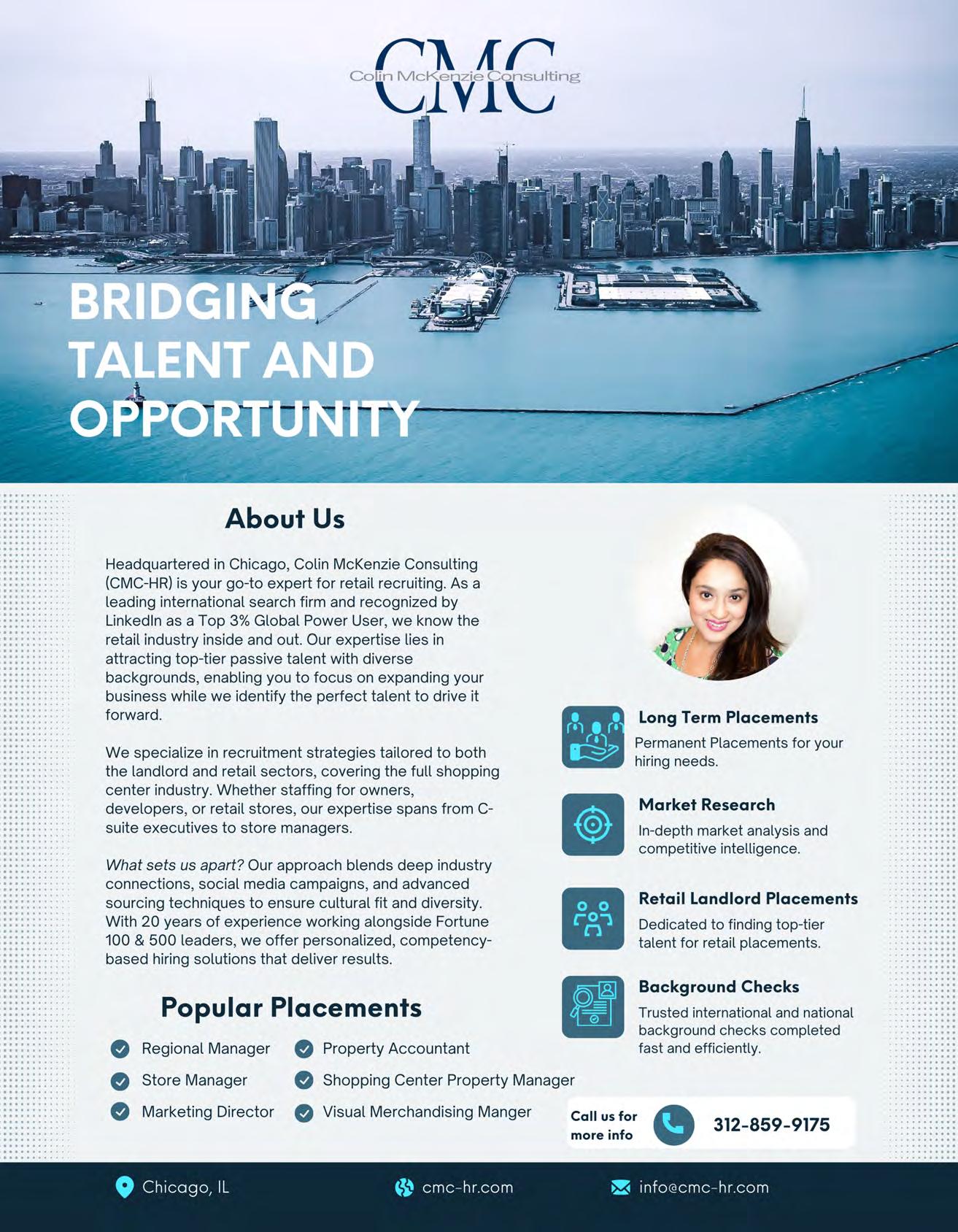










Letter from our publisher Linda Johansen-James
Welcome Letter from editor Shannon Quilty
ONE Question: Artificial Intelligence
Are we truly ready for AI to transform our shopping experience? Experts weigh-in
With the goal of being the best Canadian Tire store every day, Allan and Elizabeth Malcomson create Meerby
AI: A European Perspective
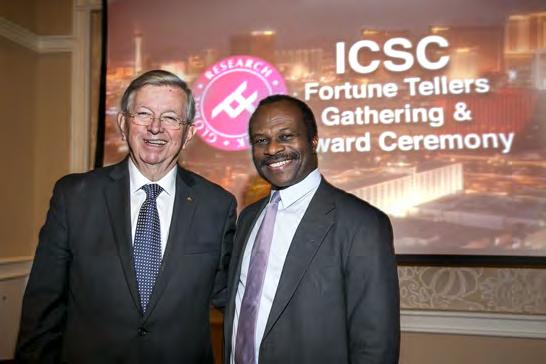

Chris Igwe weighs in on how Artificial Intelligence is transforming European Retail
Just Around The Corner…2025!!!
The Retail Advisor, Melissa Moore, trains a watchful eye on upcoming challenges and opportunities
The Revival of Vita Liberata
Alyson Hogg, Vita Liberata founder and once again owner, talks Commitment, Patience and The Rise of The Buy-Back Entrepreneur






COVER STORY:
A Bold Step for Swarovski
Michele Molon, Swarovski's Chief Commercial Officer, speaks exclusively with International Retail
The Power In Pop-Ups
Greg Parsons shares some of the most interesting concepts popping up over the Summer
Working with brands like Carlsberg, Nestlé and Nike, inspired Torben Valsted to change direction
Creative Direction, Production & Design: Brad Szollose
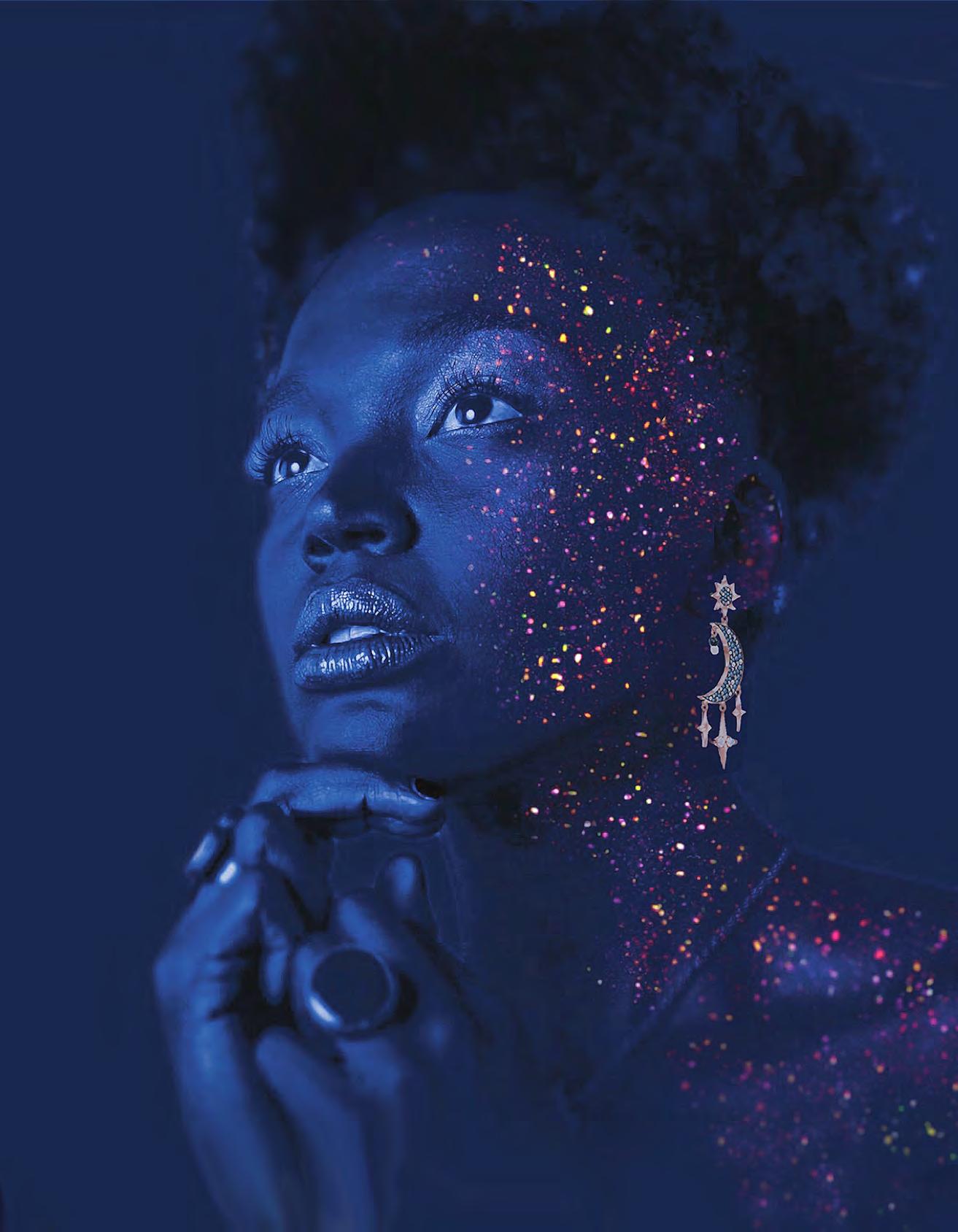



As the publisher of International Retail Magazine, I want to extend my heartfelt gratitude to all of you, our valued readers, partners, and industry professionals. The retail landscape is evolving, and it is through your support that we can keep pace with the rapid changes.
The retail industry is at a pivotal moment, where innovation, technology, and shifting consumer behavior are redefining the way businesses operate. In this era of digital transformation, personalization, and sustainability, our goal is to be your trusted resource, offering not just news but actionable insights that will help your business stay competitive and innovative.
In this issue, I was honored to personally interview Swarovski's Chief Commercial Officer responsible for the Sales Organization (B2B & B2C business), Customer Experience and Retail. I have to say, I felt like I was interviewing a real rockstar (which he is). I can’t share anymore so please read our Cover Story. Michele shared such great gems and Best Practices illustrating why, after 129 years, Swarovski's is still shining!
Each issue of IRG Magazine is crafted to keep you updated on the latest trends and the future of retail. Discover today’s innovations as Alan & Elizabeth Malcomson from Canadian Tire discuss their groundbreaking technology, Meerby. Gain insights into evolving consumer preferences from Melissa Moore, who shares trends for 2025. Additionally, learn from industry leaders like Chris Igwe and Greg Parsons, who are shaping the retail landscape. In this issue’s One Question, hear from experts on how AI is transforming the industry, ensuring you're always ahead of the curve.
Alyson Hogg, the founder and CEO of Simple Brands, Vita Liberta, talks about why she bought back her company and what she is doing to rebuild this iconic brand. She is a powerhouse, and this is a must read.
As we look to the future, I am excited about the opportunities ahead. We will continue to expand our coverage, deepen our analysis, and ensure that IRG Magazine stays a platform where the global retail community can connect, learn, and grow together.
Thank you for being a part of our journey and Happy Holidays.
Linda Linda Johansen-James Publisher International Retail Magazine

Contact us to advertise and/or to be featured in future publications: ljohansen-james@irg-retail.com Subscribe at: www.irg-retail.com 2



Welcome to our Fall 2024 Edition of
Change is scary. Change is good. Change is inevitable.
Artificial Intelligence, or AI, is already changing the retail landscape. In this issue’s One Question, we ask those in-the-know how they see AI's role in the evolving retail landscape. Whether an Early Adopter, a member of the Early or Late Majority or a Laggard, the challenges and opportunities will be inescapable.
Using technology to improve efficiencies and reduce pain points, siblings Allan and Elizabeth Malcomson, owners/ operators of Canadian Tire in Kanata, Ontario, developed Meerby, an innovative platform created with the goal of enhancing customer experience. Allan and Liz share the story of developing and implementing Meerby, and how it contributes to their goal of being the best Canadian Tire store in the country each and every day.
Melissa Moore, The Retail Advisor and host of The Retail Tea Break podcast, is looking to 2025, and identifying trends and challenges likely to change our business in the new year – unsurprisingly, most will be a direct result of new technologies.
Not all change can be attributed to technology, however. Alyson Hogg, Founder of Vita Liberata, underwent notable change when she sold her successful beauty and skin care business. Recently, in one of those full circle moments, Alyson was presented with the opportunity to buy back the brand. While much has changed in the beauty industry over those years; Vita Liberata never lost its place with make-up professionals or their core group of customers. Now, it’s finding a completely new audience!
We are thrilled to have as our Cover Story, Michele Molon, Chief Commercial Officer of Swarovski Group. Any company that has survived and thrived over 130 years has undoubtedly weathered all kinds of change; Swarovski included. With the opening of flagship locations in Shanghai, Milan, Tokyo, Seoul and the "brand temple" that is Swarovski on Fifth in Manhattan, the new locations celebrate the luxury brand’s storied history and distinctive collections. Michele talks us through the process of identifying, securing, and opening the iconic New York location, their strategic partnerships and the commercial direction of the legendary brand.
Finally, in our regular features, The Global Voice of Retail, Chris Igwe, weighs in on the changes to European retail business as a result of AI adoption. Greg Parsons' Power of the Pop-Up column revisits some of the summer's great concepts and in Pivot, Torben Valsted rethinks priorities.
As always, we hope you find value and enjoyment in the following pages.
Contact us to advertise and/or to be featured in future publications: ljohansen-james@irg-retail.com. Subscribe at: www.irg-retail.com
Shannon Quilty Editor, International Retail Magazine



One
While preparing this article for press back in October of 2024, Elon Musk rolled out his latest creations at a Tesla "We, Robot" event in Burbank, California, USA.
Musk introduced us to the first humanoid robot, Optimus, along with the self-driving Robotaxi and Robovan.
As a homage to the late science fiction author Isaac Asimov, who wrote a series of stories under the title iRobot, we can’t help but ask: are we truly ready to go beyond Smart Mirrors and Augmented Reality, to step into the world of automated restaurants, robotic waiters and eventually android sales pros?
International Retail poses the question: Are we ready for AI in Retail?
AI will be as transformative as the internet. Predictive AI can incorporate so many more signals and is already producing real-time and significantly more accurate forecasts across the board. Generative AI is changing the way we work and interact with customers. Tasks that took days upon days to complete, or that were entirely out of reach to do, now take hours, allowing teams to be more creative and personalize experiences like never before.

Shannon
Flanagan Founder of Retail Women in Tech and Retail Connected Top Retail Expert
AI is becoming an extension of the person, almost like a prosthetic for human decision-making. It helps retailers and businesses streamline their processes, making it easier and faster to serve consumers. The real power lies in how seamlessly AI can expedite solutions while enhancing the customer experience.

Dominic Miserandino CEO RetailWire.com

Artificial intelligence is transforming the shopping experience, turning it into a seamless, highly personalized part of our daily lives. This tech revolution is not just enhancing convenience but also making shopping more enjoyable than ever before.
At the heart of this transformation is personalization. By deeply understanding customer behaviors and preferences, retailers can provide memorable experiences tailored to each individual. AI analyzes data like browsing habits and purchase history to offer product recommendations and promotions that truly resonate.
Moreover, AI enables stores to adapt in real time to shopper behaviors. From adjusting store layouts and dynamic digital signage to personalized promotions, retailers are creating responsive environments that elevate the overall shopping experience. This shift marks the emergence of truly responsive retail, where every element is optimized to meet the shopper's needs instantly.

Martin Birač CEO at StoreDNA
Retailers are aiming to use generative AI to attract consumers and keep them buying. Hyper-personalization and better customer service are among the highest payoff applications of the technology.
An example of hyper-personalization is digital flyers that inform individual consumers of the best weekly deals based on their past purchases.
A test of such digital flyers for a retailer found evidence of greater consumer engagement— notably a 14 percent higher loyalty program enrollment rate, a 100 percent increase in clickthrough rates, and "increased in-store total sales by 2 percent to 5 percent," according to Oliver Wyman.
Consumers prefer a generative AI customer service agent because it is available around the clock and reduces call wait times. Generative AI could increase productivity in the retail and consumer packaged goods industry by "up to 2 percent of annual revenue — an additional $400 billion to $660 billion," according to my new book, Brain Rush: How to Invest and Compete in the Real World of Generative AI.

Peter Cohen Babson College Associate Professor of Management Practice
Peter S. Cohen & Associates
AI is really transforming retail and the broader built environment by helping businesses deliver hyper-personalized experiences, optimize space usage, and streamline operations. Whether it’s enhancing tenant or customer engagement or driving smarter, databacked decisions, AI is creating a more connected, efficient, and sustainable ecosystem. It’s exciting to see how this technology is shaping the future!

Michel Zalac Owner Zalac international

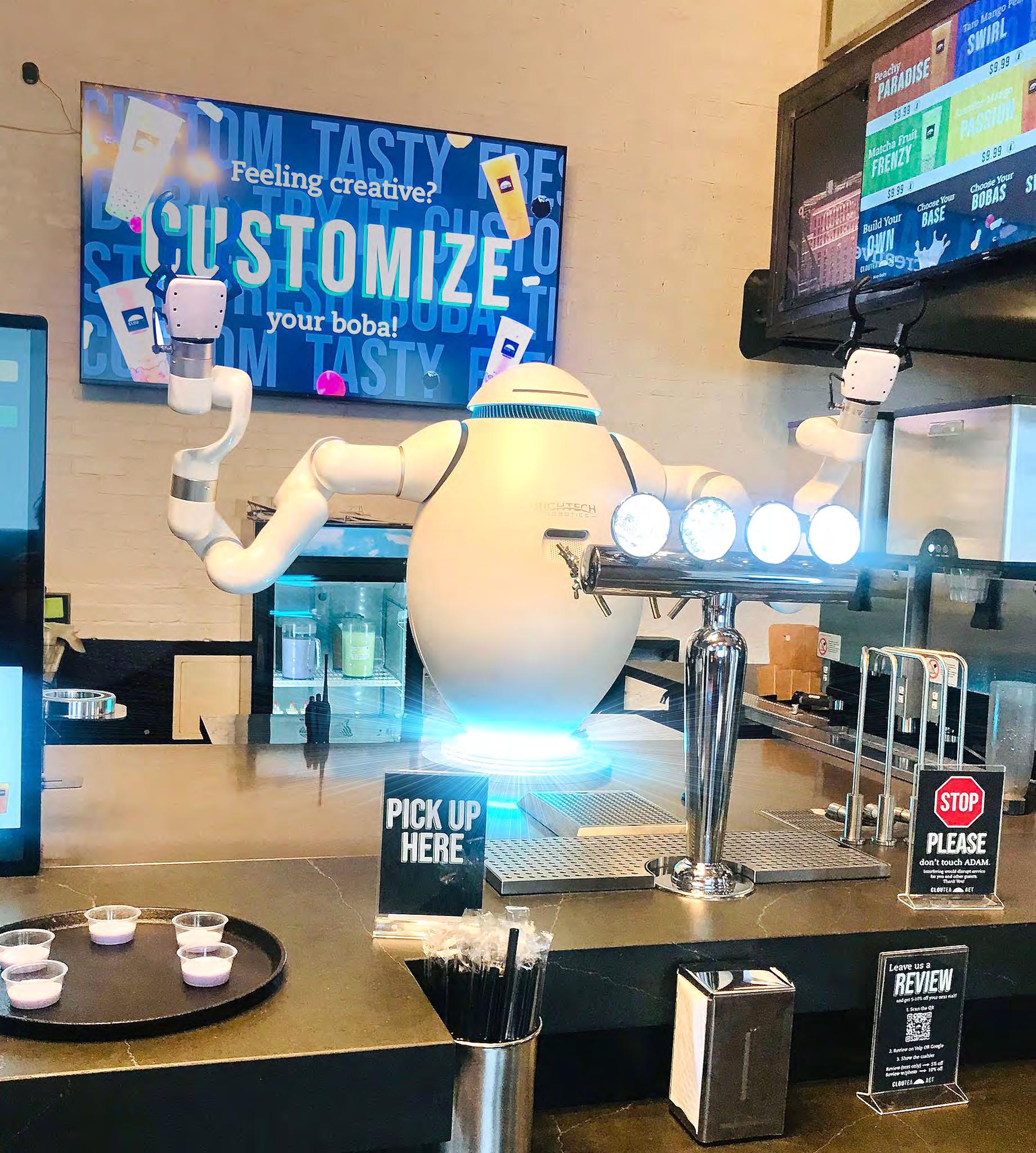
Las Vegas, Nevada, USA

Growing up in the Canadian Tire business, siblings Elizabeth & Allan Malcomson were immersed in the world of retail from a young age. Their parents successfully owned and managed three Canadian Tire locations across the country before settling in


Kanata, Ontario, to open one of the largest and most successful stores in the chain. Today, Elizabeth & Allan have taken over the senior operational responsibilities and are continuing their family’s legacy, not only by maintaining excellence in their Canadian Tire store but also by creating a technological solution that is reshaping the in-store experience: Meerby.
We sat down with Allan and Elizabeth to discuss the origins of Meerby, the journey from an internal tool to a fullyfledged business, and how they see the future of retail.
Q: Let’s start at the beginning. What led to the creation of Meerby?
Allan: Liz and I grew up with retail. From day one, we were focused on the fundamentals—replenishment metrics, seasonal merchandising, housekeeping, and so on. Customer service, in our minds, meant making sure we were in stock, keeping the cash lines short, and having a friendly cashier ready. But like many retailers, we knew something was missing. Trip assurance, or making sure the customer leaves with what they came for, was a given, but we wanted to go further. By 2019, we felt like we’d hit a ceiling with what we could improve operationally in our store.
Elizabeth: Exactly. Our processes were solid. The store would open every day, fully ready for business, with a team that understood their roles and goals. But something wasn’t clicking in terms of customer service. Even though we had a large sales team on the floor— often more than our peers—the most common feedback we’d receive from customers was that they couldn’t find help when they needed it. That’s when we started to think about how we could address this issue.
Allan: We knew that with a store of 90,000 square feet and 55,000 active products, it wasn’t always easy for customers to locate staff, especially in those big, open aisles. Back in 2019, we had about fifteen old-fashioned call boxes around the store that connected to our radios and intercom. Customers would push the button, and staff would hear it and respond. But there wasn’t any data or visibility beyond that—no way to know how long a customer had
been waiting or if they were served in time. It was purely reactive.
Q: How did you start testing new ways to improve customer assistance?
Elizabeth: We started small. At first, we experimented with a “Text the Manager” system where we put up 500 stickers around the store that said, “Text for Service.” We put them everywhere—on showcases, near barriers to purchase, wherever we could think of. But it wasn’t a success. We got maybe seven texts per 1,000 customers during the three-month pilot. It clearly wasn’t a game-changer for the customer experience.
Allan: The next step was something a bit more tangible. We distributed simple keychain tiles around the store with signage that said, “Push for Help.” was our breakthrough. We went from seven pushes per 1,000 customers to seven per 100. That’s when we realized that customers still understood and preferred the simplicity of pushing a button to get help.
Q: So, that’s where the idea for Meerby started?

Allan: Yes. We knew we were onto something, and with some engineering help from a cousin of ours who runs a tech company in Ottawa, we started developing what would become Meerby. By mid-2020, we had a working prototype of a solution



that allowed us to place buttons anywhere in the store and have them send push notifications to staff’s devices —whether it was an iPhone, an Android, or even an enterprise device provided to employees.
Elizabeth: It wasn’t just about getting a notification that a customer needed help. We realized we could do much more. We could intelligently deploy staff based on their skills, location, and availability. If a customer needed help in the skate department, the system would only notify people trained in that area. And if no one in the sports department was available, it would find someone else in the store who had the required knowledge, whether they were in housewares or somewhere else.
Q: How did Meerby evolve from there?
Allan: That’s when we really started to dig into the broader potential. It wasn’t just about notifying staff but also about making the best deployment decisions in real time. The key difference with Meerby is that it escalates requests to the best available person with the appropriate training, skills, keys, or language needed for the situation. And once a staff member claims a call, it disappears from everyone else’s notifications, cutting down on
distractions. It’s much more efficient than using radios or intercoms.
Elizabeth: We’ve also added triage features. The system can prioritize calls based on business needs. So, if a call relates to a high-priority product or vendor, it gets flagged for quicker attention. We can also factor in staff safety and workload to ensure no one is overwhelmed.
Q: How do the staff feel about Meerby?
Elizabeth: The response has been overwhelmingly positive. We made it a priority to ensure that Meerby enhances the staff experience. It’s about supporting staff, not replacing them. We aren’t creating AI chatbots or virtual kiosks. The focus is on giving our team the tools to better serve our customers.
Allan: One of the key things we did was involve staff from the beginning. We asked them where the buttons should go and how they could best do their jobs with the help of Meerby. Their feedback was invaluable. For example, they suggested adding an “Override” feature for urgent situations and a “Delayed” feature for when they’re already helping a customer but need more time before taking on another request.


Q: Can you give us an example of how Meerby works on a busy day?
Allan: Sure! Let’s say I’m a duty manager on a Saturday, standing at the front door, and I notice a long line forming at the cash registers. Before Meerby, I would’ve had to rely on memory or a list to figure out who was available to help. Now, with Meerby, I can simply check the app, and it will show me which staff are free and capable of running cash. It’s all automated—no guesswork. And instead of paging the entire store and possibly getting too many staff responding, Meerby makes sure the right number of people show up.
Elizabeth: It’s the same if I’m alone in a department and need help with a difficult customer. I can press a button or request help inside the application, and Meerby will send the right person to assist me. It makes our operations much smoother and helps us maintain our focus on the customer.
Q: Has Meerby evolved to cover more than just customer service?
Elizabeth: Yes, we’ve expanded it beyond customer help buttons. For example, we’ve implemented it in bathrooms to trigger cleaning requests when needed. And we’ve integrated

emergency reporting features, such as Code Adam for lost children, and finishing up protocols for first aid and active threat situations. In these cases, Meerby can override the “busy” status of a staff member if they’re certified to help, like in a first aid emergency.
Allan: We’re also layering customer traffic data over button pushes. This helps us get even more granular in our understanding of our customers, our team, and our service. It’s not just about responding to individual calls anymore—we’re using the data to improve everything from staff deployment to sales forecasting.
Q: How does Meerby help you achieve your sales goals?
Elizabeth: Meerby has become an invaluable tool for our daily operations. Each day, we set sales targets and use the platform to track how we’re doing. For example, if our goal is $120,000 for the day and by noon we’ve hit $36,000, we can see how we’re tracking against that target. The system also takes into account “curve factors,” which are forecasts based on historical traffic and sales patterns.
Allan: The data also helps us adjust staffing levels in real time. If we’re ahead of our sales curve, we can pull
staff from quieter departments to help in high-traffic areas. And Meerby tracks staff performance, including how quickly they respond to requests and how often those interactions lead to sales.
Q: What are your future plans for Meerby?
Allan: We’re always looking for ways to evolve the platform. Right now, we’re focused on expanding into other industries, like QSRs or better known as Quick Service Restaurants. In those environments, customers expect quick and efficient service, and Meerby is already proving to be a game-changer by helping staff respond to issues like dirty tables or bathroom maintenance faster than ever before.
Elizabeth: We’re working on new features for real-time monitoring and decision-making to make the system even more intuitive.
Q: Where do you see Meerby going in the long term?
Allan: Ultimately, our goal is to make Meerby the go-to solution for intelligent staff deployment and customer service optimization. We want it to be in every type of store, not just retail or QSRs. We’re already seeing the impact it’s having on staff morale, productivity, and customer satisfaction, and we’re just getting started.
Elizabeth: For us, it’s about creating a tool that enhances the in-store experience for everyone—customers and staff alike. Our parents taught us the importance of great customer service, and Meerby is our way of bringing that lesson into the future of retail.
Q: Any last thoughts?
Allan: Meerby is a tool that’s been built by retailers, for retailers. We respect our staff and use technology to support them, not replace them. That’s been our guiding principle from the start, and it’s what makes Meerby so effective. We’re proud of what we’ve built, and we’re excited to see where it goes next.
Elizabeth: And we couldn’t have done it without the incredible support and feedback from our team. We’re continuously working to make the experience better for everyone, and that’s what makes Meerby so rewarding.
With over 150,000 button pushes yearto-date in eight pilot stores and plans to break 250,000 by the end of the year, Meerby is well on its way to becoming a staple in retail operations. For retailers looking to innovate without losing the human touch, Meerby offers a solution where Help is always Meerby—both for customers and the staff who serve them.

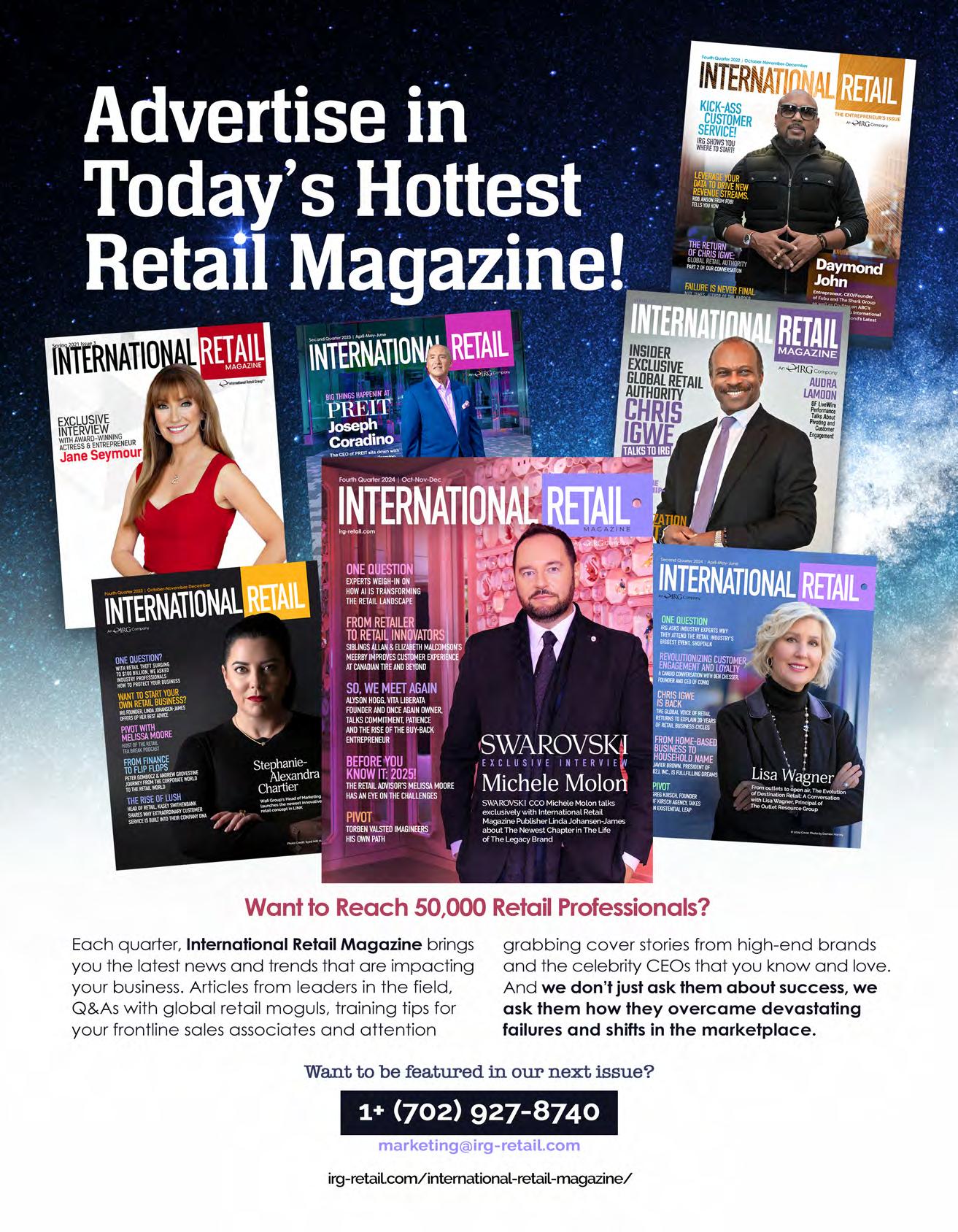


I recall vividly when E-commerce was in its infancy. Retailers and brands were trying to get their heads around it. Was it just a fad, or should they pay attention and invest in it? This was in the early 2000’s. While at a consulting company in 2010 we were approached to carry out a survey on omnichannel retailing among global brands. It was staggering.
Some 10-years after E-commerce started to pick up, these big brands were getting concerned about being left behind and started investing massively, creating dedicated teams, bringing in technical resources,

and establishing processes and systems, including assessing the potential impact on their physical stores.
Fast forward, and here we are with Artificial Intelligence (AI) banging on our door.
While there are many questions to be asked and answered, the consensus is that AI is here to stay and the train is leaving the station.
One thing is very clear. AI is not a luxury, carrying a significant price tag, but a necessity.
The fear of getting left behind in this race to better optimize supply chains and product selection, understand customers, their behaviour and what drives them, are some of the pillars underpinning the value of AI, using predictive analytics. If retailers do not manage to achieve this, their competitors will outperform them.
Here in Europe, the conversation is still in its infancy, but it is at the heart of retail strategies. I share insights into what brands are doing and where their focus lies.
When looking across European retail, it is interesting that the several major global brands have engaged actively in projects using AI. These include fashion brands: Zara, H&M, Mango; Luxury Brands: Louis Vuitton, Dior, Prada, Gucci, Guerlain, Stella McCartney; Supermarkets: Aldi, Carrefour; Online platform: Zalando; Home furnishing: IKEA; Fast Food: Burger King.
In most cases, they are focusing on similar strategies, with some exceptions. It is interesting to know that several of these brands have partnered with technology firms, from Google Cloud to start ups who offer them what they need to achieve the outcomes expected. Some are in testing phase, while others have rolled out their AI solutions. Here are some examples:
IKEA has launched a new AI Assistant to help customers not only in making their journey easier, but also providing them with personalized suggestions to create their own designs based on the customer’s room sizes, personal
preferences, sustainability criteria, budget and more. IKEA is creating an in-house, customized version of Open AI ChatGPT that allows the customer to ask questions and get answers to create their own experience using this tool.
H&M is addressing one of the fundamentals of the power of AI. They are using it to optimize supply chains and inventory as well as using machine learning to decide what inventory to send to specific stores, based on customer interaction and data gathered, thereby reducing waste and improving sales and profitability. They are also engaging with the customer through their marketing by gathering data and insights with AI providing that data.
Mango is using AI to not only offer personalization, but also predict product demand and therefore inventory management. They are also using it to optimize store layout, as are a few other retailers and brands.
Here in Europe, the conversation is still in its infancy, but it is at the heart of retail strategies.
Luxury Brands have a variety of strategies, but several of them are also focused on the highly topical issue of waste reduction, such as Stella McCartney, who has long had a strong commitment to sustainability.
Gucci and Prada also have waste reduction as a core part of their strategy,


HP 21.5" FHD Micro-edge

coupled with using AI to support in sales forecasting accuracy, along with trend forecasting used by brands such as Louis Vuitton. Several of the luxury brands are using AI driven marketing campaigns to predict demand, manage supply chains, communicate with customers via social media or direct marketing strategies. These strategies also allow them to offer more personalized product designs, enhanced customer service and shopping experience both online and in-store. The ability to predict fashion trends is key to assisting their design teams.
Dior is believed to be one of the first brands to use interactive AI software to communicate with customers via social media. They also offer an opportunity for customers to have a greater in-store experience to virtually try on clothes.
Meanwhile German supermarket retailer, Aldi, uses AI to streamline its store layout and optimize product placement. For a retailer whose business model is low cost, high efficiencies from supply chain to stores, this is critical to sales and performance. French hypermarket retailer, Carrefour, uses AI to optimize supply chain, assess and adjust prices,
manage inventory, with a byproduct of minimizing food waste. Several supermarkets in France have started using AI to assess body language with a view to catching shop lifters. While facial recognition software has been trialed, or used, this poses issues around privacy.
German online platform, Zalando, as well as Amazon have been using AI to offer product recommendations and tailored suggestions based on a customer’s search and purchase history. These examples demonstrate that retailers and brands are invested in AI to offer solutions. Where the smaller retailers and brands are in this AI process is less obvious. While there are many questions about AI including job losses, quality of data, data use and storage, transparency, ethics and costs, the benefits can be seen.
In conclusion, AI is a significant step forward in addressing key issues in our industry, using technology. The revolution has started. We, the retailers and brands and industry professionals, must ensure that the customer is informed about what we are doing, why, and how it benefits us all. Let us learn more about AI and educate each other. Let’s play the long game, together.




Retail Tea Break podcast, and founder of The Retail Advisor brings us next year’s predictions.
As we edge towards 2025, it is almost a relief that next year’s challenges seem to be a variation of this years! After Covid and the rapid introduction of retail AI, it’s time to slow down (ever so slightly) and strategize properly to drive the industry forward.
As host of The Retail Tea Break podcast, I talk to retailers, brands and experts about the state of retail all the time.

I once overheard a customer tell their child that if they didn’t do well in school, they’d end up working in a shop too!
The staffing shortage in retail has never been greater and customers have become very vocal about it.
The challenge has become getting people through the door; but with low wages, unsocial working hours, lack of benefits and the perception of lack of career growth, are you really surprised that people don’t want to work in retail?
Morale across retail teams is spiraling as the workload increases, the ‘fun’ has been stripped away from many stores and departments. The solution is simple, start investing.
Retail people have always and will always be our biggest asset. They drive our brand values; they interact with our customers and they sell our products and services both in-store and online. Mitigate the challenge and make your brand the one everyone wants to work for.


As many retailers continue to navigate the new world of artificial intelligence, the biggest challenge is using it a productive way that suits both the brand and the customers. When used properly, AI should enable retailers to improve efficiencies, reduce costs and personalize the customers experience. The capable retailer will utilise AI to support stock management and forecasting, by utilizing customer data and trends in the market. They will also look across the business to employ AI in areas including range planning, price optimization, HR and customer service. However, the long-term challenge will be in using the right data for AI to make decision autonomously, to support the retailer and the customer.
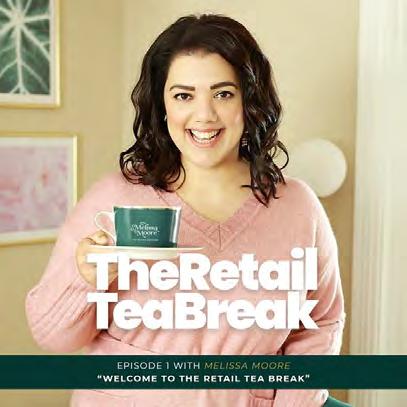

Over the last few years consumers have got used to switching brands due to COVID related supply chain issues and the heightened ‘cost of living’ prices. Releasing just how easy it is, the challenge for retailers now lies in keeping customers and driving loyalty. Loyal customers keep coming back, the buy more often and they spend more. They keep retailers in business!
The solution could be found in leaning into ‘real’ loyalty programmes that listen to and deliver what the customer wants.
A huge challenge. Next solution is to deliver an easy, efficient shopping experience both in-store and online that excites the customer and encourages them to shop.
Finally, the hardest solution—to indulge the customer with a one to one experience that is personalized and special, to ensure that the customer keeps coming back.
Retail is never easy, but if we can combat the challenges facing us in a strategic way, we’ll continue to show up for all our customers in 2025.

In 2003, Alyson Hogg created what became the gold-standard in self-tanning products. Not only did Vita Liberata provide natural and consistent coloring (no more orange!), it also fed the skin! After guiding the product to global success, Alyson and her investors sold their interest and moved on. Then came the phone call that brought Vita Liberata back into Alyson’s life and presented the opportunity to reset, recharge and reimagine the product. Alyson speaks with International Retail Publisher, Linda Johansen-James and Editor, Shannon Quilty about the rise, and rise again of Vita Liberata and shares her experience as a “buy-back” entrepreneur.
Shannon Quilty, IRG Magazine (SQ): You were 39 years old when you created the brilliantly successful selftanner, Vita Liberata, the go-to in makeup artist’s kits and in the cabinets of people worldwide. How did you get there? How did you start thinking this is something I can do and do it well?
Alyson Hogg, Vita Liberata (AH): That's not necessarily how an entrepreneurial mind works. What entrepreneurs do rather is they see an opportunity, a need and attempt to fill it.
When I was studying philosophy at university, I loved the challenge of taking a nugget of a problem and pulling it apart, getting into the guts of it. I suppose that kind of mindset is what took me into business. With the product that we're now famous for, Vita Liberata, I was thinking of the challenges of the product itself.
Where I come from in Ireland, there are a considerable number of people similar to me in skin color and even much paler. They feel they need a product like tanning in order to look healthy. It's not a desire. It's a need in their world.
Many of the available products were awful – orange, streaky, drying, etcetera. I was wary to do anything in the space. It was my assistant, Cherith, who suggested I could improve on it.


At that point, it seemed like self-tanning products had not been developed with the consumer in mind. Knowing Cherith and the challenges she faced as a very pale person, I went into the lab and worked to remove the barriers to use. First the color - make sure it doesn't go orange and is okay for Irish skin. I always felt if I can tan Irish skin, I can tan any skin. It doesn't tan in the sun, and it's equally hard to tan with product. It will always go to the orange first unless you're very careful about your formula. So that was my benchmark. I had a person in mind, Cherith, for whom I really wanted to make a much better product.
SQ: You were studying philosophy and yet you went into the lab. Where did you get such a diverse set of skills?
AH: I was older when I started. I was in a second marriage, with two stepdaughters, three children of my own, and several careers behind me. My first career was in broadcasting, second career in politics and as a mother, and my third career in academia.

By the time I started the business I already had done so many things. It gave me an incredible advantage.
Linda Johansen-James, (LJJ): What was the source of the initial investment?
AH: My first $50k was from my father. It was part of my inheritance from my mother who died when I was 23. I had this inheritance, and my father let me use it to buy stock and get started. At first, we made skin care. We had a high-quality product, but badly packaged (very simple and plain— I was 20 years ahead of my time). It was a hard sell. So, I took a stand in our local shopping center for three months, learning what women wanted from their product. It was invaluable education. In a time before social media, I got a total reach into my customer. Who is she? What does she want? How should I talk to her? I felt her. I was her.
With that information, I was ready to take the next step with the product, but I would need more investment funds.




LJJ: Where were you going to sell it?
AH: I didn't know. Honestly, I was just going to sell it, I suppose, to salons and to pharmacies.
When I made the tanner, we were selling into these little mom & pop stores until we were invited onto a news program to talk party skin. I did a three-minute piece with the journalists, and we completely sold out within three weeks.
We were providing something people really wanted and it was addressing all the barriers to use. I was a woman making a product for women with women top of mind. I believe a brand is about souls and heart. It's a living, breathing thing, whose purpose must be joy. Its energy comes from the people who love it.
A brand is not a product or logo. It's not even distribution. The brand has to be the passion, the drive, the creativity, the love that comes from behind all of that and was the original reason for making it.
LJJ: How do you keep motivated after all these years?
AH: It's not difficult to be passionate if you have a superb team, which I do. It's not difficult to be passionate about what you do if you're proud of the products that you make. It's not difficult to be passionate about the business you're doing if you feel respected and demand respect from your retailers.
There are numerous ways to sell a product these days. If you want me and my brand, you'll be respectful. And by respectful, I do not mean you will say nice words. I mean, you will act respectfully in terms of the margin, the marketing, of what you expect from us, and what we expect from you. It will be a partnership, or it will not be.
That is the only way to be successful. Sometimes the retailer strategy is only about securing the highest margin and deepest fees from their vendors. They seem not to notice that if they hack the guts out of an emerging brand, it will not have any cash left to help drive the sales in store and, ultimately,

the venture will fail.
I am in the fortunate position TO FEEL able to stand away from these “opportunities.”
I prefer to develop a plan against a sales strategy that leaves room to spend on marketing and communication. That said, you do need to have tremendous confidence in your product if you are going to refuse “bad” opportunities. You need to be quite brave and be able to breathe deep and hold it.
SQ: So, it’s 2017, you’ve perfected the product and Crown Laboratories comes calling. Were you looking to sell?
AH: We were looking to sell. The investors were coming up to their five-year window and they wanted to exit.
SQ: And how did you feel about that? This was your baby.
AH: It was never my baby. I already had five of those! A brand is a living, breathing thing, but not a human being. It does require nurturing, however, which usually requires finance. The first round of significant investment I took was very difficult to do because I had to sell shares. Coming from Northern Ireland, this was regarded with suspicion and often seen as a sign of failure. So, the first time was exceedingly difficult. Not because I felt
that the brand was my baby, but rather that I felt that I somehow fundamentally failed the project at hand because I needed to bring in money. It was not widely appreciated just how expensive international expansion could be. However, once the investment was made, it took me only a few days to get over the trauma of it and then I never looked back. When the time came to sell completely, it wasn’t a problem.
LJJ: Where were you selling Vita Liberata at that point? What distribution channels?
AH: We were in thirty-two countries. Our major market was the USA and then UK. We were all across Europe, Australia, South Africa, Canada. The sales were circa $50,000,000 across the till. It was thriving and growing. We were well-known and very well respected. We never forgot about innovation of the product. Not just innovation for innovation's sake, but innovation to improve product and experience. That was the key and at the heart of everything that we did. So, no one was surprised when we sold but everybody did wonder what was going to happen to the brand. I was too tired at the end of that year to have much of an opinion. I just thought it'd be fine. I'll still be there.
LJ J: You set the standard for self-tanning. You were the luxury sustainable brand that was good for your skin, with moisturizer and anti-aging products in it.
AH: HYALURONIC ACID! We were using it fifteen years ago…IN TANNERS!!

LJJ: You were really the leader in that industry when you sold. Then you decided to buy it back. How did that come about?
AH: I didn't go looking for it. I stayed with the company for two years post sale, fulfilling my obligation and doing my job. Perhaps because I had such a varied career prior, my whole life, value system and identity were not all tied up with the brand. I didn't feel insulted by any changes being made.
After fulfilling the two years, I stepped away for almost four years and worked with a couple of other companies.
Unexpectedly, I received a phone call from one of the chaps on the Board that I hadn't spoken to for three years. He pitched the idea of me buying back the business.
The key question was…What have you done with it? Sales had fallen to about a third of where they were when I sold. They’d decreased distribution and subsequently market share.
After reviewing the numbers, I was surprised to find it in better shape than expected. This brand's not dead so let's
give her another chance! The love for the product is now being discovered by a whole new generation of people who think they’ve discovered something new. It's a testament to the amount of work we did at the beginning that a lot of the products that were heroes back then are still heroes today albeit to a smaller group of people. The sheer quality of the Body Blur product is proven – it’s in every single makeup artist’s bag in all of America and the UK and there is not a red-carpet event in the world where it does not feature.
This time around I am in control which is, bizarrely, more relaxing. It’s easier to delegate because it's my own risk. My team is amazing. Many were with me first time around and now they are all able to truly shine – and they do!
SQ: I like that having all the responsibility is liberating versus when the responsibility was parsed up between investors.
AH: The reason it's liberating is because I also know stuff. I am unsurprisable!
LJJ: What's the next big thing for you?
AH: We're expanding on the Body Blur franchise which is lovely because I always wanted to make more. The original and best is still there, but we're stretching formats. We're bringing back core products, making them even more nutritious for the skin.
Of course, SPF has a role to play but Step One is to deliver beautiful natural bronze skin tones so that sun exposure is truly unnecessary. We conducted a survey asking a thousand women about sun-bed use in the UK. We were shocked
to learn that 95% had not been warned of the dangers by a health professional, even though it is regarded as a Level One carcinogen, alongside smoking thing we web sales during in May. a government backed education programme warning people of the dangers.
As I say, Step One is to remove the need people feel to put themselves in danger by offering a product with effects as good or even better than a natural tan. That is what Vita Liberata is all about.
LJJ: Are you going to be selling in other venues? What are you looking for in distribution?
AH:
retail. I think that there's a real place for Vita at spas and resorts. That’s a natural. Department stores are interesting but must be well merchandized so the story can be told well. At the heart, we're looking for good retail partners.

It's the partnership that makes the success. It did the first time around, and I believe, will do exactly the same now. It's not only about the quality of the product, but also about the quality of the relationship.





Swarovski Group began its journey to a globally respected brand when Daniel Swarovski patented his electric glass cutting machine in 1895. With a vision of making “a diamond for everyone,” Swarovski produced beautiful crystals for jewelry. Their innovative bent was in evidence as early as 1919 when Swarovski expanded their offer to include grinding, polishing and production of specialized instruments, a branch of the business called Tyrolite. The business expanded further with the establishment of Swarovski Optik in 1935.

Recently, Swarovski’s Crystal Business has undergone a resurgence under the direction of Alexis Nasard, Chief Executive Officer, Giovana Englebert, Creative Director, and Michele Molon, Chief Commercial Officer. With the opening of the Manhattan Flagship, partnerships with trendy brands and influencers such as SKIMS and Kim Kardashian, and their ongoing commitment to quality products and exemplary customer experiences, Swarovski continues to innovate, surprise and delight!
International Retail Magazine is honored to present this exclusive conversation with Michele Molon.


Linda Johansen-James, International Retail Magazine Publisher (LJJ):
Thank you for joining us. I've been a huge fan of Swarovski for as long as I can remember. I just love your brand! I can't tell you how much I appreciate you spending the time to speak with us. What is your role with Swarovski?
Michele Molon, Swarovski Chief Commercial Officer (MM):
It’s my pleasure to be here! I’ve been with Swarovski for fourteen years, and in my current role as Global Chief Commercial Officer, I oversee Consumer Goods, Touchstone Crystal (our exclusive American-based brand), and B2B. This means we’re not only focused on creating beautiful products for customers around the world, but also working hand-in-hand with other industry-leading brands that want to bring their own creative visions to life with Swarovski crystals. Together, these three areas form the heartbeat of Swarovski, allowing us to connect with people at every level—from high street shoppers to luxury brands.
Managing Consumer Goods and B2B simultaneously is incredibly rewarding because it gives us such a broad impact. We get to be part of both sides of the equation —creating products that customers cherish directly and helping other brands amplify their stories using Swarovski’s expertise and sparkle. This dual approach lets us be versatile and forward-thinking, and ultimately, it lets us be everywhere our customers are.
At Swarovski, our goal is to showcase the brand’s full potential at every touchpoint. There’s something powerful about seeing our crystals amplify someone else’s vision.
LJJ: I'd like to start out with the flagship store opening on Fifth Avenue in Manhattan. Tell us about it.
MM: This is by far the most exciting project of my career. The Fifth Avenue flagship was a dream that came together over years. We wanted a location that would truly represent what Swarovski stands for—creativity and quality—and we felt Fifth Avenue was the perfect spot for it. Of course, it was not easy to secure a flagship location there; it involved

a big investment in the space, custom fixtures, furniture, and the architecture itself.
The space was formerly a GAP store on the corner of Fifth Avenue, which has always been a dream location for us. When I learned it was available, I knew it was meant to be. There was a lot to work through, as the entire building was being renovated. But I felt like this was the place for us, and it turned out to be exactly right.

LJJ: First of all, congratulations. It’s spectacular! I now judge all store experiences based on your store because it's so incredible.
MM: I’m a little biased, but I agree—it’s extraordinary! It brings Swarovski to life in such a unique way.
Our vision was to show Swarovski in all its dimensions—jewelry, crystal components, created diamonds, watches, and more—all in one experience. It was also essential to focus on customer experience; we wanted the store to tell a story and create a memorable experience, not just a transaction.
Giovanna Battaglia Engelbert, our Creative Director, was instrumental in bringing this vision to life. When I told her I had secured a location on Fifth Avenue, she was thrilled, and her vision shaped everything about the space, from colors to unique touches. It’s a space where we could bring something to New York that it had never seen before, showing the full depth of Swarovski in an extraordinary way.
LJJ: Is this going to be what the future stores are going to look like down the path for Swarovski locations?
MM: Partially, yes. With every flagship, we want to create an experience where customers don’t just shop—they explore. And each flagship reflects its city, so while the colors, shape, and discovery elements are consistent, there are local touches. For example, our flagship in Tokyo’s Ginza district has a beautiful blue facade with blue elements inspired by Japanese design. In New York, the store is built around the idea of an exploding crystals, where every gem tells its own story. It’s truly unique to New York.



For our regular retail stores, we have the WonderLux concept, which captures Swarovski’s luxury experience on a smaller scale. We play with the two elements LUX, light and luxury and the concept of WONDER, which should always entertain our customers. Today, approximately 70% of our stores have been refurbished to this concept and its delineation. Today, about 70% of our stores globally follow this design, bringing our brand essence to customers wherever they are.
LJJ: How are you innovating? How are you using the technology? We have AI. We have smart mirrors, scents in the air. What are you doing specifically that is on the forefront of this technology?
MM: Omnichannel can only be a buzzword or a retail concept. Jewelry is not really the easiest product to turn into an omnichannel experience. You want to wear jewelry. You want to try it. There was a lot to consider. Step by step, we really learned how people were navigating our stores. We could also find that it's not necessarily true, at least from my point of view, that the experience must be exactly the same between online and offline. An offline customer is not only an offline customer. An offline customer loves to shop in-store but also loves to shop online for the features of the online, not for the features that we present offline in online. What came out of the years of working on these elements was that simplicity is really what makes


it work. So, we first investigate the digital innovation and to the digital features that have a purpose in a store.
You don’t want to just add a digital component that nobody is using just so you can tick off the box of omni or digital. I reviewed some of the things we were doing in the past with mixed screens, interactions, etcetera. With our sales staff we developed a tablet concept where they are supported by digital innovation. The staff can have in their hands, on just a little iPad, the entire library of the company. They can take the payment. They can work on the CRM and the loyalty of the customers in that little tablet. For me, digital and retail is phyidgital.
When you're able to give a purpose to a digital tool—one that helps staff to do their job even better, they feel even more important. Sometimes, people underestimate how difficult it is working on the sales floor. I come from there, so I know exactly how it feels.
It is our intention to offer an experience that is visually beautiful. This is thanks mainly to Giovanna for her creativity. I translate this creativity into reality. When it comes to the customer experience, we want to offer something that is as perfect but as simple as possible. Digital should add depth, not distraction. We want every digital component to serve the customer’s experience, not overshadow it.
LJJ: How do you train your employees to provide an exemplary customer experience? Also, how do you keep them up to date with all the products and collaborations?



MM: Our people are the heartbeat of Swarovski, embodying our brand values, driving customer engagement, and creating a unique connection with every visitor. They are quite simply on of our greatest assets and a true competitive advantage in retail and sales.
We nurture their careers, providing a clear progression path from sales assistant to flagship manager, supporting them in achieving their goals while maintaining a consistent look and feel in our stores worldwide.
At our CX Academy in Zurich, a global center of excellence for learning and development, team members engage in various learning journeys tailored to their roles, from quick training sessions to in-depth workshops for campaigns and collection launches. To further strengthen this foundation, we have local training teams who work closely with store teams, delivering on-site training whenever and wherever it's needed.
Through our internal network, our people stay connected, accessing updates, new training materials, and resources to help them grow. This intranet fosters a strong sense of community where colleagues can interact, share knowledge, and seek support. This network has become a cornerstone of our approach, allowing for real-time feedback, and fostering a culture of shared learning and continuous improvement. Customer insights and feedback play a


critical role, influencing our approach to ensure each team member feels valued and motivated to deliver the best possible experience.
LJJ: I’m thinking about this new generation. Do you see a difference in buying patterns between boomers and millennials and even the younger generation coming up? Is there any data you can share?
MM: Swarovski appeals across generations, which is unique. We have customers from age seven to age ninety! Each group connects to different aspects of our brand. Giovanna’s design vision attracts new audiences while respecting our heritage. Our partnerships with brands like SKIMS have introduced us to younger audiences who are discovering Swarovski in a way that feels natural to them. Whether it’s a custom pair of sneakers or home decor, Swarovski adapts to remain relevant while staying unmistakably true to its roots, like joyful extravagance!
LJJ: I swathe crystal water bottle on LinkedIn— I have to say, I loved it!

Thank you! That water bottle is a great example of our B2B innovations. Every year, we bring new ideas to life with our partners, helping them use Swarovski crystals in fresh, meaningful ways. Our B2B work lets other brands express themselves with a crystallized approach, which adds something special to their products.


LJJ: If you were giving advice to a brand-new entrepreneur about to roll out into retail, what would your advice be?
MM: I’d say, stay grounded and understand your customers. Growth is exciting but can go sideways without a solid foundation. I recommend starting with a “consumption hub” approach—find your ideal customers and start small with pop-ups to test the waters. It allows you to build presence and learn along the way. For new brands, authenticity is essential. Define your values, invest in a core team that believes in your vision, and be clear about what your brand stands for.
In short, I would say: don’t chase growth— earn your customer’s loyalty and be sure that you don’t run out of cash. The rest will follow.
LJJ: Everything comes back to pop-ups! I love that you said that. Michele let’s talk about Swarovski and sustainability. We all know that's a big buzzword in today's retail. Swarovski has really focused on that. Can you talk to us about why that's important to you and the brand and what you've done?
MM: Sustainability is at our core. Recently, our Fifth Avenue flagship received LEED Platinum Certification, which is a milestone. From eco-friendly lighting to using certified paints, we continually work to reduce our environmental impact. We’re also reducing air freight by using sea freight wherever possible, lowering our carbon footprint significantly. Alexis Nasard, our CEO, has made sustainability a priority across operations and partnerships, keeping us on track with our commitment to the planet.
LJJ: Michele, thank you so much for sharing with us the incredible journey of the Swarovski brand. Congratulations on all you’ve achieved. We can’t wait to see what’s next!
MM: Thank you! Swarovski is constantly evolving, and I’m excited to see how we’ll continue to innovate, inspire, and reach new heights.


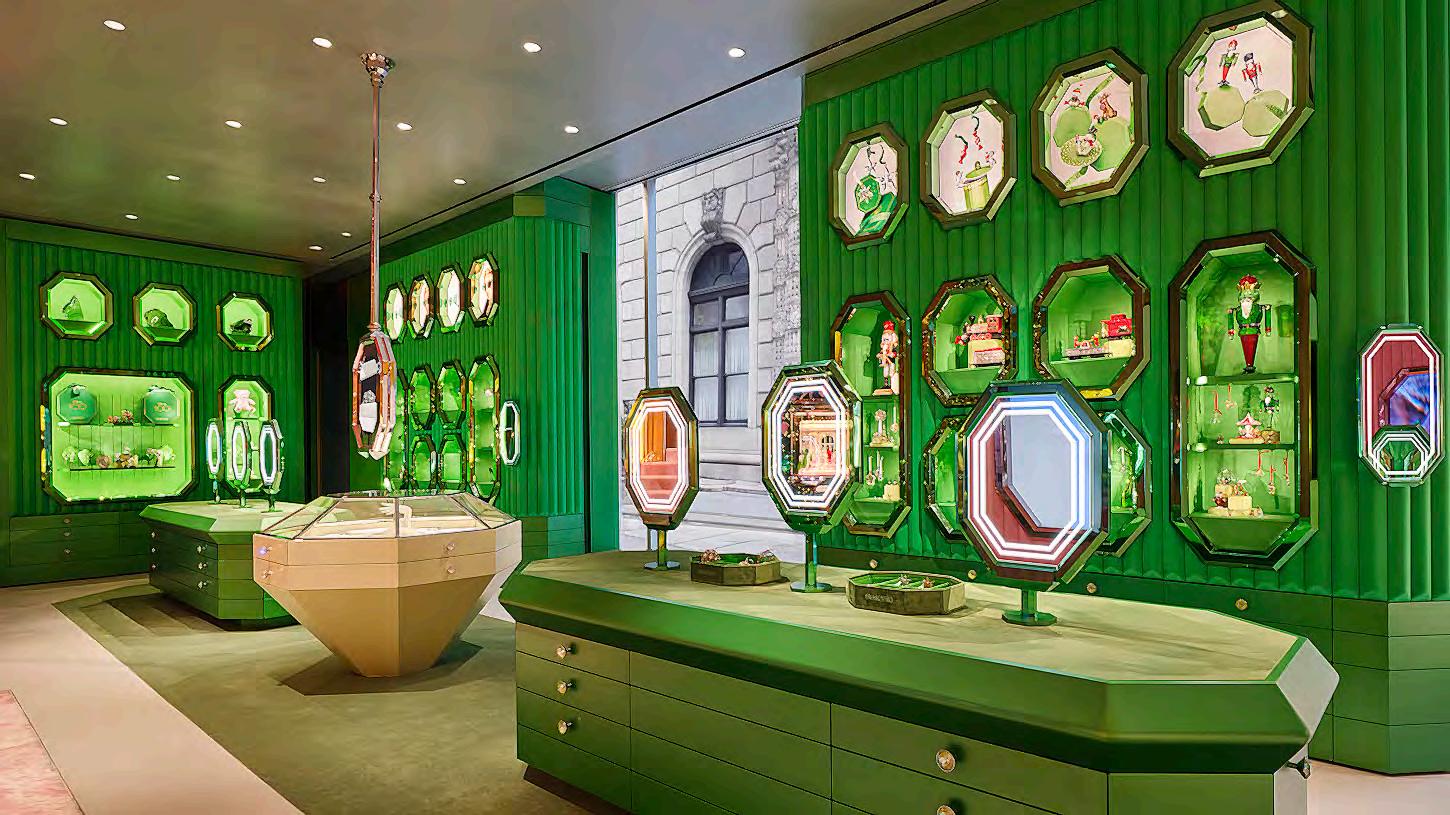

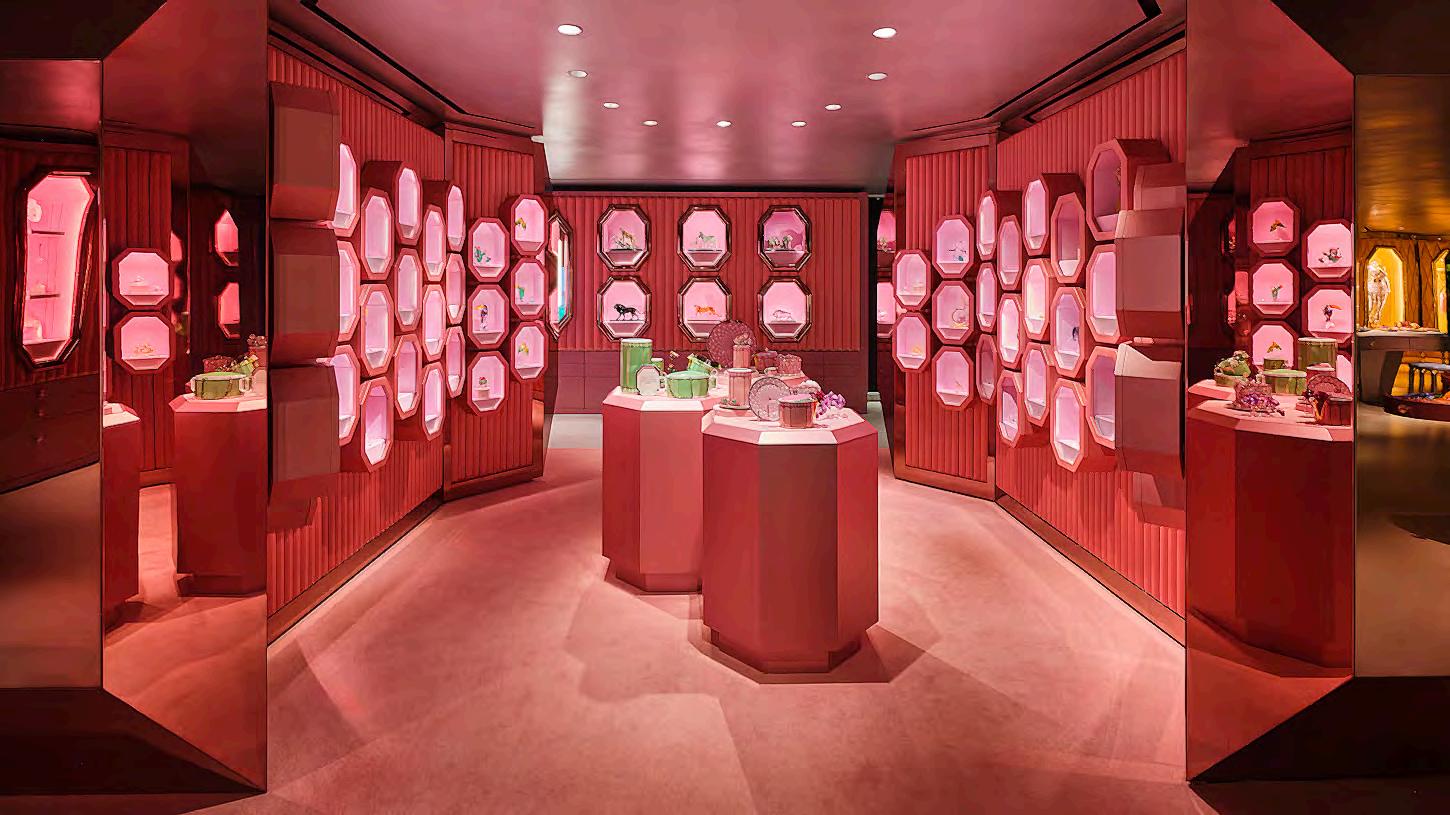

Summer always offers some incredible retail experiences from local, regional and global brands. Retailers are clamoring to find the best locations around the world where they can introduce new concepts, test different store layouts, meet new customers all while using pop ups and retail experiments to gain a market advantage. The summer of 2024 was no exception where countless retailers were popping up.
The Summer Olympics and Paralympics are the world’s largest sporting events uniting athletes from across the globe. Paris hosted the quadrennial events this year (the first since pandemic restrictions had been lifted) and brands hoped to connect with fans, tourists and athletes while visiting the city for the event.

Melissa is a luxury footwear brand based n Brazil that specializes in sandals and slip-on shoes. They are no stranger to recognizing the power of retail experiments having opened several events earlier this year. The label opened a series of pop-ups across Paris showcasing classic and new designs to introduce them to a wider global audience.
“Melissa Frizzante” was an immersive experience designed to highlight one its most popular styles and colors. Shoes were presented in illuminated, glass-front “refrigerators” for shoppers to browse and select options.
Melissa also opened another multi-sensory experience in a street-level space near the City’s center. This location featured their popular jelly sandals in a multitude of colors while offering a non-alcoholic cocktail bar for shoppers.
The final experience of Melissa’s pop-up trifecta opened at Galeries-Lafayette where it offered its best-selling “Possession” sandals. These shoes come with sassy names like “Don’t Worry Be Happy” and “Watermelon Haze.”

Guess Jeans launched its new company motto with a pop-up event at Galeries-Lafayette.
“The Next 40 years of Denim” kiosk displayed new styles of its signature fabric developed using its proprietary laser wash technology.

Sundek, the Italian swimsuit brand debuted an Olympic-themed collection in Paris for the games. They brought 14 different models sourced from recycled materials.
Designs were inspired by the flags of France, Italy, Japan, Canada and Australia. Included in the temporary offering were t-shirts with their motto: “We surf all over the world since 1958.”
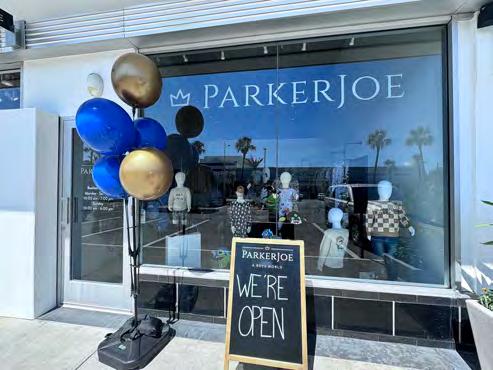
Parker Joe tests full-line store in iconic Houston neighborhood
Parker Joe is a mother-daughter owned, boys retail brand based in Houston, TX. This dynamic duo of entrepreneurs has taken their vision from small seasonal events to a full-line retail store in less than a year. This retail brand is a one-ofa-kind clothing destination for parents looking for high quality boy’s attire.
Parker Joe opened a 6-month pop up at River Oaks Shopping Center after testing different venues including local vendor markets and a shops at local Painted Tree Boutiques. They’ve introduced first-to-market bespoke apparel technology while offering an extensive event programming of children’s book readings as well as women’s group events as traffic drivers to the store.
The pop up was so successful that they have found a permanent retail home in Houston.

When you think of a pop-up store, images of vacant buildings and spaces reimagined into vibrant single brand boutiques are usually what come to mind. Bal Harbour Shops shopping center in Miami, FL doubled down on the ephemeral strategy and decided to take the ENTIRE property on the road. Haywood Mall in Greenville, SC is the latest destination for the Bal Harbour Shops ACCESS Pop up. Housed in 30 retrofitted shipping containers, stores from the South Florida flagship have set up shop next to the main mall entrance. Tiffany & Co., Golden Goose, Dolce & Gabbana, Addict, Cremieux, Assouline are just a few of the luxury brands participating in this fascinating tour. The traveling marketplace opened during the summer for a twelve-week run through mid-October.
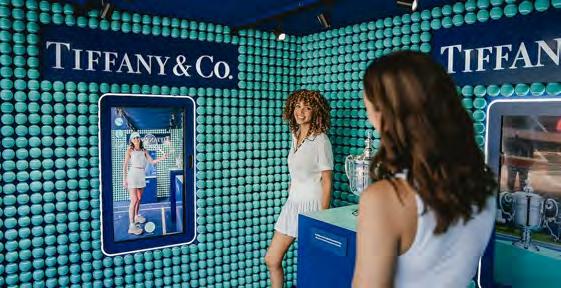


Brand partnerships are nothing new at major sporting events. However, brands deepening their connection with their sports and using temporary stores as a medium is growing.
Tiffany & Co opened a two-week immersive fan experience at the USTA Billie Jean King National Tennis Center. The pop-up display included replicas of the Men’s & Women’s Singles trophies, an interactive augmented reality mirror. Tiffany handcrafts each official award in their American factory. Also, included was a Elsa Peretti Diamonds by the Yard racket surrounded by their iconic blue shaded tennis balls.




“Fake it till you make it!” The life mantra of an Imagineer.
“Don’t fix the blame, fix the problem.” When I close my eyes, I hear the penetrating voice of my late mentor, John Evan-Jones.
It would often be followed by an inspiring reminder: “The best way to predict the future is to create it.”
I learned early that the “formula” for success is simple: BE – ACT – HAVE.
First, you become the vision of your future self. Then, act with belief, taking
bold, forward-moving steps, big or small, toward your vision. And ultimately, as you walk in the shoes of your future self, you will have it. This mindset—the ability to project your future into the present—is the foundation of being an Imagineer: someone who imagines the future and then engineers to it.
Despite degrees in Marketing Management and Management Psychology, I consider myself more of a “pracademic," powered by street smarts. After all, when you believe that “nothing is written” and that you have the power to create your path, reading books offers limited guidance.
My journey took shape by working for three amazing brands, which I refer to as my “CNN”—not the news network, but Carlsberg, Nestlé, and Nike. These brands propelled my international Imagineering journey, which for the past 27 years, after leaving Denmark, has taken me across the world (Croatia, The Netherlands, and the USA).

From the very beginning, I was entrusted with opportunities to drive game-changing transformations. My roles weren’t routine; they were fueled by a passion for disruption and pioneering new paths. The Danish beer market experienced a revolution when we introduced Trade Marketing, creating win-win-win synergies between consumers, retailers, and brands. In Croatia, we built a new beer brand from scratch, capturing 20% of the market—a testament to the power of positioning and differentiation. At Nestlé, we doubled sales in just three years



by transitioning from distributor-led sales to our own sales force approach, bringing us closer to consumers.
Nike was where everything culminated. Leading strategic shifts in market structure, optimizing assortments, and steering the NSP (Nike Stores Partnered) business globally were major milestones. All of the experiences from the past helped fuel a mind transformation at Nike EMEA, when we drove a shift from gut-feeling decisions to insights-driven decisions. We transitioned from instinct to intelligent intuition (ii), letting insights dictate strategy.
Looking back, my passion for Imagineering has always been centered on one thing: understanding consumers and listening to their “voice.” Whether through success or failure, one lesson became clear—brands often reinvent the wheel rather than adapting to the rapid shifts in consumer behavior.
The introduction of smartphones in 2008 wasn’t just a tech revolution; it marked a paradigm shift in how consumers interacted with brands. Unfortunately, many companies missed it, still hanging on to outdated emotional advertising or transactional propositions.
“If you want to catch up, do the same. If you want to get ahead, do it differently.” This has become my motto, and it connects with my personal mantra: Fake it till you make it. It’s not about being “fake”—it’s about navigating the unknown, imagining what’s possible, and “faking” the steps until they become real. As an Imagineer, there is no trail to follow.
Success lies in imagining the future and engineering it into existence.
Inspired by the experiences from Carlsberg, Nestlé, Nike, and all the great people I’ve had the opportunity to work with, I decided to pivot from corporate business to create and market the ImagineerShip business framework. ImagineerShip is a practical approach based on the understanding that success relies on synchronizing how your entire organization comes together around driving the three business cornerstones (intel, strategy, and leadership) in the pursuit of a joint purpose.
You don’t grow the business…you grow Imagineers who grow the good ViiBE (Virtuous ii Bonding Experience), which leads to growing consumer bonds. ImagineerShip unifies how to sense (intel), think (strategy), and feel (leadership) good ViiBE consumer bonds. In a world where bonding is the new branding, it combines agile connectivity (sense), 360 experience (think), and bondability (feel) to get ahead in the infinite game of business.

Many people—and organizations— don’t tap into their subconscious mind. Instead, they deal with the noise between their conscious and subconscious. ImagineerShip unlocks the collective subconscious genius of an organization, freeing people to drive innovation, team spirit, and effectiveness in a way they’ve never experienced before. The joint focus on cultivating consumer bonds is key to everyone lifting together and serves as a catalyst for growing team bonds.




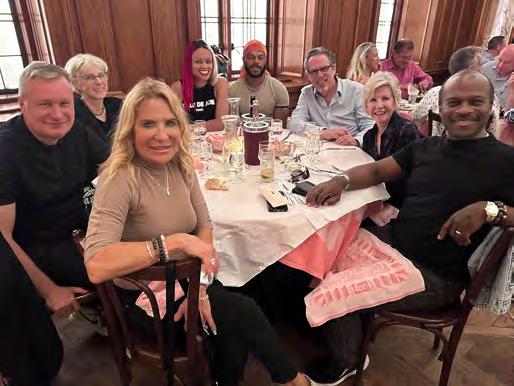

is to bring you the essence of more than 30 years of experience built into a framework that can give you a head start in growing yourself, your team, and your business.
ImagineerShip is now live at: www.imagineership.com, powered by IRG, Chris Igwe International, StoreDNA, and TVC—theViiBEcreators.
Sense Their* Journey, Master Their* ViiBE —*Consumers & Team.


